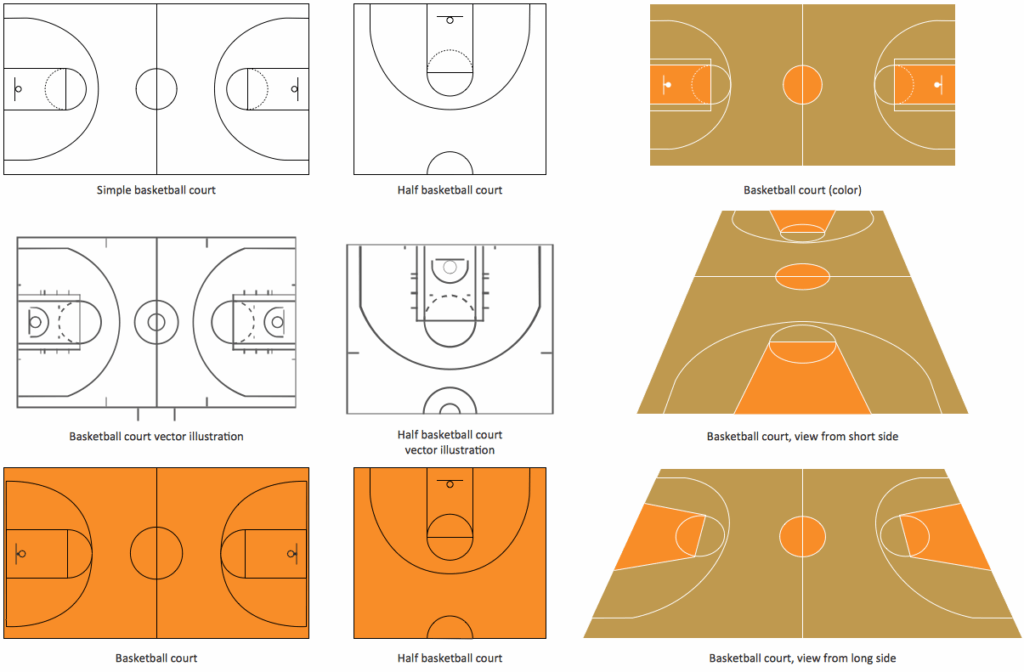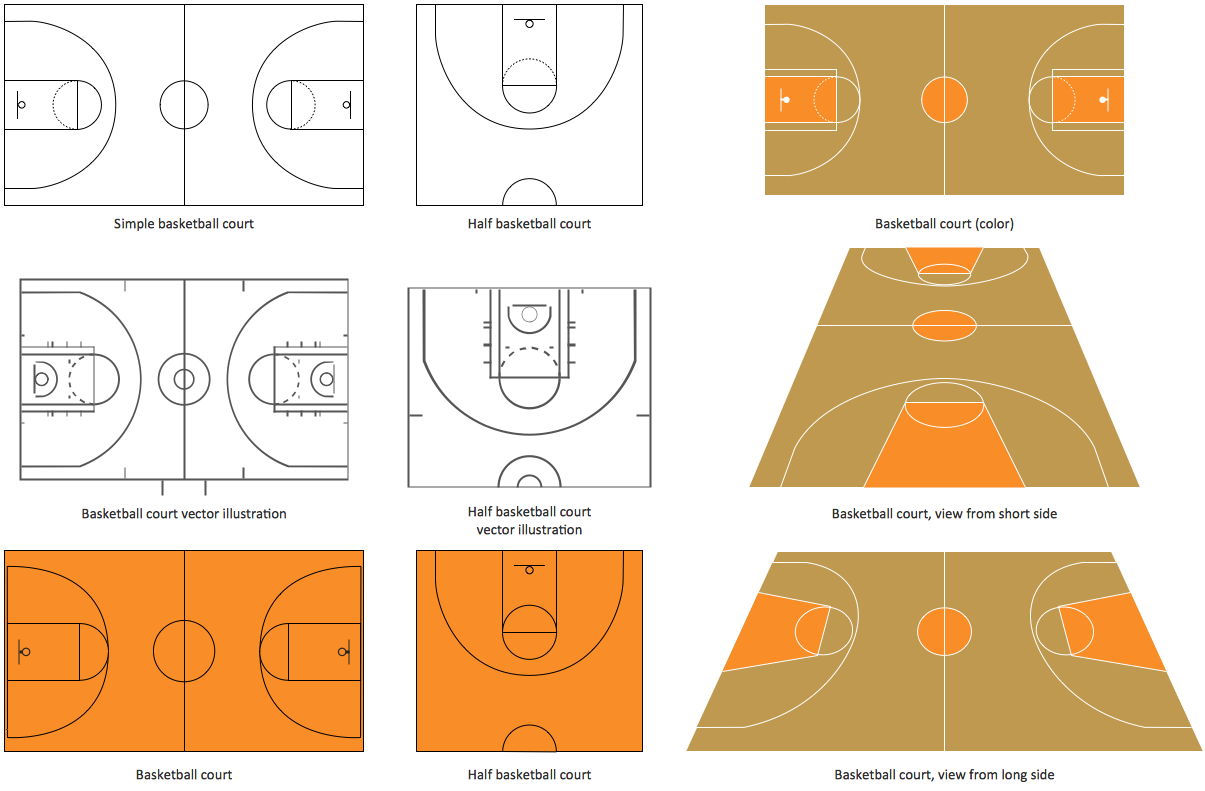
Decoding Indoor Basketball Court Size: A Comprehensive Guide
Understanding the intricacies of indoor basketball court size is crucial for architects, facility managers, and even avid basketball enthusiasts. Whether you’re planning to build a new court, renovating an existing one, or simply curious about the dimensions, this guide provides a comprehensive overview of the standard sizes, key considerations, and factors influencing the overall court design. We’ll delve into the official regulations set by governing bodies like the NBA and FIBA, explore variations in court size for different levels of play, and discuss the importance of considering run-off areas and other safety features. Getting the indoor basketball court size right is paramount for ensuring a safe, enjoyable, and competitive playing environment.
Standard Dimensions and Regulations
The dimensions of an indoor basketball court are not arbitrary; they are carefully regulated by governing bodies to ensure fair and consistent play across different venues and levels of competition. Let’s examine the standard sizes set by the National Basketball Association (NBA) and the International Basketball Federation (FIBA).
NBA Court Size
The NBA, the premier professional basketball league in North America, mandates specific dimensions for its courts. An NBA indoor basketball court size measures 94 feet (28.65 meters) in length and 50 feet (15.24 meters) in width. These dimensions provide ample space for fast-paced, dynamic gameplay, allowing players to showcase their athleticism and skills.
- Length: 94 feet (28.65 meters)
- Width: 50 feet (15.24 meters)
FIBA Court Size
FIBA, the international governing body for basketball, sets slightly different dimensions for indoor basketball courts used in international competitions and many other leagues worldwide. A FIBA court measures 28 meters (91.9 feet) in length and 15 meters (49.2 feet) in width. While the difference may seem small, it can impact the flow of the game and the strategies employed by teams.
- Length: 28 meters (91.9 feet)
- Width: 15 meters (49.2 feet)
Key Differences and Considerations
While both NBA and FIBA courts share similar proportions, the slight difference in size can influence player positioning, spacing, and overall gameplay. When planning your indoor basketball court size, consider the level of play that will primarily take place on the court. For professional-level training or competition, adhering to the specific regulations of the relevant governing body is crucial. For recreational or multi-purpose courts, some flexibility may be permissible, but it’s still essential to maintain safe and functional dimensions.
Factors Influencing Indoor Basketball Court Size
Beyond the standard dimensions set by the NBA and FIBA, several factors can influence the actual indoor basketball court size and layout. These considerations are crucial for ensuring a safe, functional, and enjoyable playing environment.
Run-Off Areas
Run-off areas are the spaces surrounding the perimeter of the court that provide players with room to safely decelerate and avoid collisions with walls or other obstacles. Adequate run-off areas are essential for preventing injuries and ensuring player safety. The recommended run-off area is at least 10 feet (3 meters) on all sides of the court. For high-level competition, even larger run-off areas may be necessary. Failing to consider adequate run-off space when planning your indoor basketball court size can lead to serious safety hazards.
Ceiling Height
Ceiling height is another critical factor to consider. A low ceiling can interfere with gameplay, particularly when shooting high-arcing shots or attempting rebounds. The recommended minimum ceiling height for an indoor basketball court is 23 feet (7 meters), but higher ceilings are preferable, especially for competitive play. A higher ceiling allows for more freedom of movement and reduces the risk of players hitting the ceiling with the ball. Consider the skill level of the players who will be using the court when determining the appropriate ceiling height.
Seating and Spectator Areas
If the indoor basketball court is intended for hosting games or events with spectators, you’ll need to factor in space for seating and spectator areas. The amount of seating required will depend on the expected attendance and the overall purpose of the facility. Consider the viewing angles and sightlines when designing the seating layout to ensure that spectators have a clear view of the action. Also, ensure there is adequate space for ingress and egress to avoid congestion and safety hazards.
Multi-Purpose Use
Many indoor basketball courts are designed for multi-purpose use, accommodating other sports and activities such as volleyball, badminton, or even community events. If the court will be used for multiple purposes, you’ll need to consider the space requirements for each activity and ensure that the court dimensions are flexible enough to accommodate them. This may involve using adjustable basketball hoops, retractable seating, or modular flooring systems.
Variations in Court Size
While the NBA and FIBA set the standard dimensions for professional and international play, variations in indoor basketball court size are common for different levels of competition and recreational use.
High School Courts
High school indoor basketball court size typically mirrors the NBA standard, measuring 84 feet (25.6 meters) in length and 50 feet (15.24 meters) in width. However, some smaller high schools may have courts that are slightly shorter in length due to space constraints. It’s important to verify the specific dimensions of the court before scheduling games or practices.
College Courts
College indoor basketball court size also typically adheres to the NBA standard of 94 feet (28.65 meters) in length and 50 feet (15.24 meters) in width. College basketball is often seen as a stepping stone to the professional leagues, so maintaining consistent court dimensions helps prepare players for the next level.
Recreational Courts
Recreational indoor basketball courts can vary significantly in size, depending on the available space and the intended use. Some recreational courts may be smaller than the standard dimensions, while others may be larger. The key is to ensure that the court is safe and functional for the intended players and activities. Consider the age and skill level of the players when determining the appropriate court size.
The Importance of Accurate Measurements
Accurate measurements are essential when planning and constructing an indoor basketball court. Even slight deviations from the standard dimensions can affect gameplay and player safety. It’s crucial to consult with experienced architects and contractors who are familiar with the specific requirements of indoor basketball court construction. They can help ensure that the court is built to the correct dimensions and that all safety features are properly implemented.
Using laser measuring tools and other precision instruments can help ensure accurate measurements. It’s also important to double-check all measurements before beginning construction to avoid costly errors. By paying close attention to detail, you can ensure that your indoor basketball court is built to the highest standards of quality and safety.
Conclusion
Understanding the intricacies of indoor basketball court size is crucial for creating a safe, functional, and enjoyable playing environment. By considering the standard dimensions set by the NBA and FIBA, as well as the various factors that can influence court size, you can ensure that your court meets the specific needs of your players and activities. Remember to prioritize safety by providing adequate run-off areas and ensuring sufficient ceiling height. Whether you’re building a new court or renovating an existing one, careful planning and attention to detail are essential for creating a top-quality indoor basketball court that will be enjoyed for years to come. A well-planned indoor basketball court size contributes significantly to the overall quality of the playing experience.
[See also: Basketball Court Flooring Options] [See also: Basketball Hoop Installation Guide]
